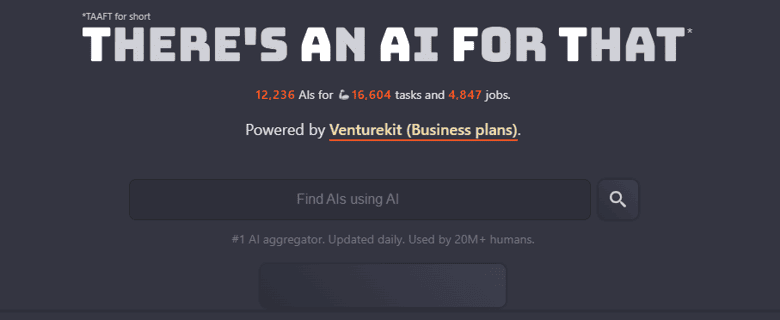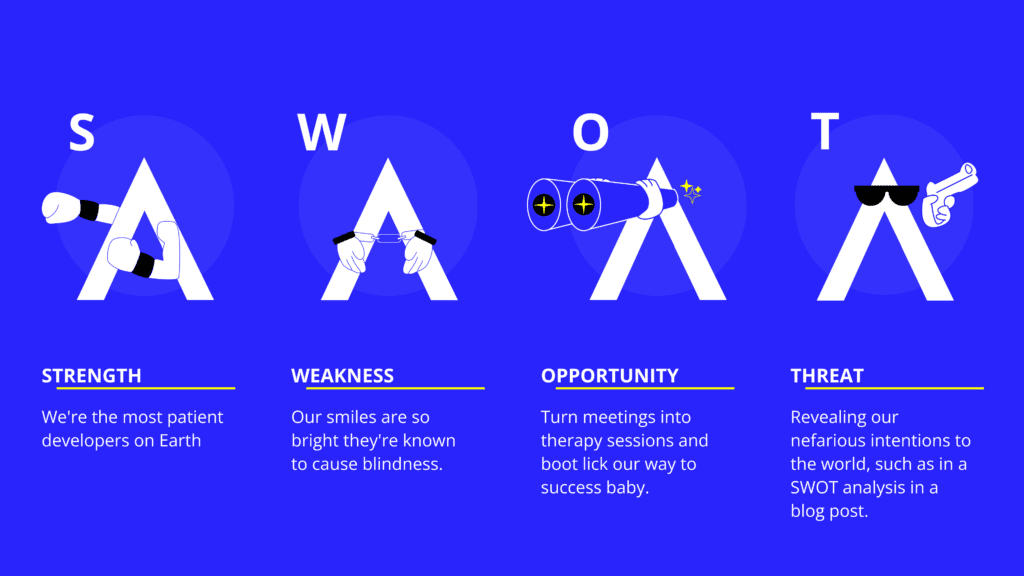In mobile app development, knowing the competition is crucial for success.
Conducting a thorough competitor analysis can provide invaluable insights to help refine your strategy, identify opportunities, and mitigate risks.
By meticulously examining the competitive landscape, one can glean invaluable insights, gaining a nuanced understanding of market dynamics, consumer behavior, and emerging trends.
This analytical scrutiny not only fortifies your strategic decision-making but also empowers you to preemptively adapt to evolving market conditions, ensuring sustained relevance and competitive advantage in an ever-changing business ecosystem.

In this guide, we’ll walk you through the steps of conducting a Mobile App Competitor Analysis in 2024.
Understanding the Importance of Mobile App Competitor Analysis
At Upstack Studio, we don’t just want to share what to do, but the rationale behind our suggestions as well.
If you’re the ‘shoot first and ask questions later’ type, here are some reasons it’s beneficial to stop and assess the competition before jumping in with both feet.
Why Conduct a Competitor Analysis?
Time to channel your inner Simon Sinek.
Before diving into the nitty-gritty of competitor analysis, it’s essential to understand why it matters, and frankly there are plenty of good reasons.
Competitor analysis helps you:
- Identify market trends and customer preferences:
This allows you to discern emerging market trends and ever-evolving customer preferences, providing invaluable insights that can steer your product or service development in the right direction. - Understand your competitive landscape:
Here is where you can gain clarity on where your business stands relative to others in your industry, enabling you to pinpoint areas of strength and areas needing improvement. - Uncover potential gaps and opportunities:
This analysis unveils potential gaps and opportunities within the market, empowering you to capitalize on untapped niches and innovate strategically. - Benchmark your app against competitors:
By benchmarking your app against competitors provides a yardstick for performance evaluation, facilitating informed adjustments and optimizations to enhance your offering’s competitiveness. - Inform strategic decision-making:
Ultimately, armed with the knowledge garnered from competitor analysis, you’re equipped to make well-informed, data-driven decisions that align with your overarching business strategy, thus maximizing your chances of success in a dynamic and competitive marketplace.
Not every idea is equal, and a competitor analysis ensures you don’t find yourself pursuing one that was dead in the water from the start.
7 Steps to Conduct a Mobile App Competitor Analysis
1. Define Your Competitors
Begin by identifying your direct and indirect competitors.
Direct competitors: offer similar products or services targeting the same audience.
Indirect competitors: offer alternatives or substitutes.
For example, if you’re thinking of creating a directory, other directories are direct competitors, while grandaddy Google is probably your prime indirect competitor.
2. Evaluate Competitor Features and Functionality
Now you know the competition you’re up against, right?
Not yet! All you know is who they are.
Time to assess the features and functionalities offered by your competitors’ apps.
Pay attention to user experience, design elements, navigation, performance, and any unique selling points (USPs) they may have.
3. Analyze User Reviews and Ratings
User reviews and ratings provide valuable insights into what users like and dislike about your competitors’ apps.
Look for common themes, pain points, and areas for improvement.
Go through their app store comments, check out forums like Reddit and Quora, and don’t forget to check to see if they’re commonly featured in non-sponsored listicles.
How do you know it’s not sponsored? Authors keep the boot licking to a minimum.
4. Study Pricing Strategies
Nothing ruins a good product faster than a poorly thought-out price, so examine the pricing models and strategies adopted by your competitors.
Are they offering freemium models, subscriptions, or one-time purchases?
Analyze how pricing impacts user acquisition, retention, and overall revenue.
The goal here is not to charge slightly less than them and get into a price war – it’s to identify how much they charge for the value they provide.
This gives you a benchmark of how much you can charge should you provide more or less value (after all, sometimes people don’t mind a lesser quality product if the price is cheaper).
5. Assess Marketing and Promotion Tactics
Study your competitors’ marketing and promotion efforts across various channels, including:
- social media
- app stores
- email campaigns, and
- partnerships
Identify what tactics are driving user acquisition and engagement, and what are not.
One thing we’ve noticed is that any time a SaaS heavily advertises on YouTube, it gets plenty of negative backlash on forums like Reddit.
So don’t think you can just promote your product on each platform in isolation!
6. Monitor App Performance Metrics
Let’s assume by now you’ve created your app.
Does the competitor spying ever stop? Nope!
Just as you track your app’s key performance metrics, do your best to track those of your competitors.
Key metrics include:
- downloads
- active users
- retention rates, and
- revenue
That last one may be a bit tricky, but there are data aggregators out there that can give you a reasonably accurate figure.
Compare these metrics with your app’s to identify areas of strength and weakness.
7. Stay Updated on Market Trends
Keep a close eye on emerging trends, technological advancements, and shifts in consumer behavior within the mobile app industry.
We’re not saying you should jump on every trend you see.

The correct answer is to adapt your strategy accordingly to stay competitive.
Also, what good fortune, we just happened to publish our eleven mobile app development trends for 2024.
Get Used to Doing SWOT Analysis For Your Mobile App
A SWOT analysis is a strategic tool used to assess internal and external factors that can impact the success or failure of your app.
By meticulously dissecting these elements, a SWOT analysis empowers app developers and stakeholders to make informed decisions, capitalize on advantages, mitigate vulnerabilities, and strategically position the application for sustained growth and resilience in the dynamic digital ecosystem.
It consists of four sections: Strengths, Weaknesses, Opportunities, and Threats.
| Aspect | Description |
| Strengths | What competitors’ apps excel at, such as robust features, user-friendly interface, strong brand recognition, or innovative technology. |
| Weaknesses | Weaknesses of competitors’ apps, such as poor user experience, limited functionality, outdated design, or vulnerabilities. |
| Opportunities | Potential opportunities in the market competitors may have overlooked, such as untapped customer segments, emerging technologies, or new features. |
| Threats | Consider potential threats to your app posed by competitors, market saturation, changing consumer preferences, or disruptive innovations. |
Here’s what a SWOT analysis of Upstack Studio might look like.

Like it?
Then download our free template and get to work!
Meanwhile, here are some tools to help you with the various steps listed above.
Tools for Mobile App Competitor Analysis
1. Data.ai

Data.ai offers comprehensive app market data, including download and revenue estimates, app rankings, and competitor insights.
2. Sensor Tower

Sensor Tower provides app store optimization (ASO) tools, competitive intelligence, and market analysis to help you stay ahead of the competition.
3. SimilarWeb

SimilarWeb offers insights into web and app traffic, audience demographics, and competitor analysis to inform your marketing and acquisition strategies.
Conclusion
To put it professionally: mobile app development is really friggin competitive.

You can do everything right, and your app might still never see commercial success.
Conducting a thorough competitor analysis is essential for staying ahead of the curve.
By understanding your competitors’ strengths, weaknesses, and strategies, you can make informed decisions to drive the success of your own app in 2024 and beyond.
The spying never stops!
Hey there stranger, thanks for reading all the way to the end. Consider joining our mailing list for a one-stop resource on everything from micro SaaS validation all the way to execution and promotion. Get a nifty list of questions to ask app developers when you sign up!
App Developer Interview Questions Template
Download this template now so you know exactly what to ask App Development Agencies! Let us know where should we send it through the form below.




